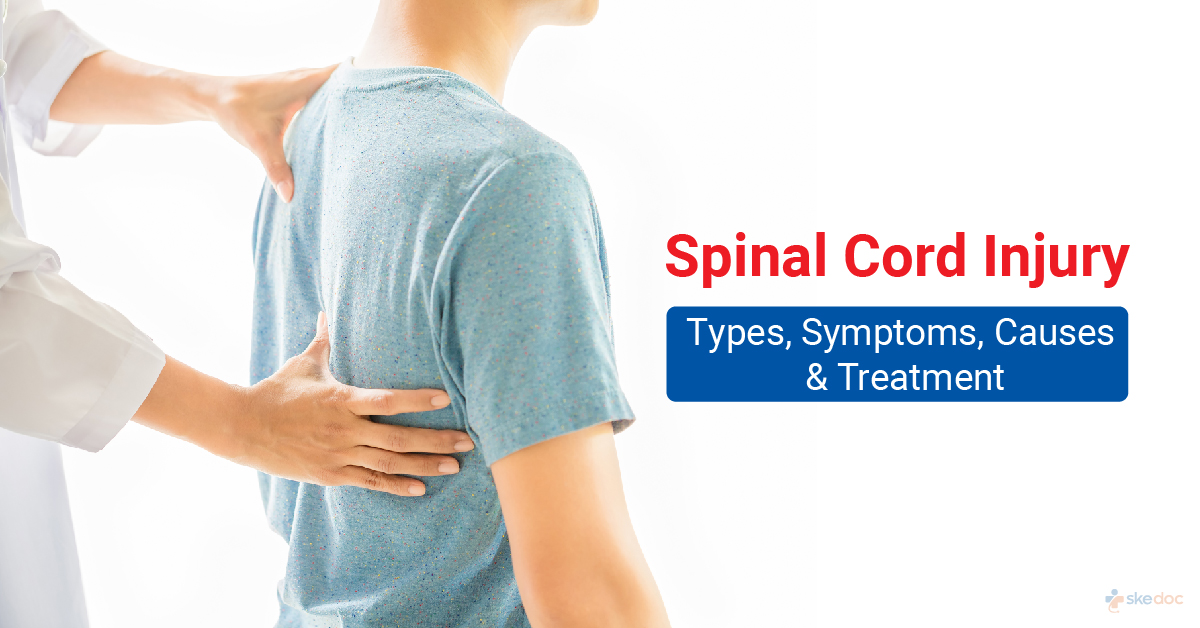Allergy
Blood Diseases
Bone & Joints
Brain
Cancer
Child Care
Cosmetic Surgery
Diabetes
Endocrinology
ENT
Eye
Gen Medicine
General Surgery
Heart
Kidney
Lifestyle
Liver & Digestive
Lung
Men’s Health
Mental health
Physiotherapy
Rheumatology
Skin and hair
Sleep Disorders
Spine
Transplant
Women Health
Thyroid
Vascular Surgery
Spinal Cord Injury Overview

A spinal cord injury is defined as damage to the spinal cord, which is a severe kind of physical trauma with long-term and significant consequences for daily life.
The spinal cord is a bundle of nerves and other tissues enclosed by the vertebrae in the spine. The spine is made up of stacked bones that go from the base of the brain down to the lower back and end near the buttocks.
The spinal cord plays a vital role in transmitting messages from the brain to all parts of the body and transmitting messages from the body to the brain. These signals traveling via the spinal cord are responsible for sensation and limb movement.
Some or all of these signals may be interrupted when the spinal cord is injured. This can result in a complete or partial loss of sensation and mobility below the site of the injury. Injuries closer to the neck tend to cause paralysis, affecting a larger portion of the body than those in the lower back region.
Causes
Spinal cord injuries are relatively uncommon and often result from sudden trauma, violent incidents, or accidents. Here are several causes of spinal cord injury that can lead to damage:
- Stabbing, gunshot wounds, or other sudden violent attacks
- Diving into shallow pools or striking the pool bottom
- Trauma to the head, neck, chest, face, or back during car accidents
- Head or spinal cord injuries caused by strenuous sports activities
- Falls from heights
- Electrical current-related mishaps
- Certain types of cancer
- Arthritis
- Certain Infections
- Certain medical conditions such as spina bifida or polio
- Severe twisting of the torso or midsection of the body
Types
Spinal cord injuries are typically categorized into two major types:
- Complete Injury: In cases of a complete injury, there is total paralysis. This leads to a loss of function below the level of the injury. This paralysis affects both sides of the body and can result in quadriplegia (paralysis of all four limbs) or paraplegia (paralysis of the lower half of the body).
- Incomplete Injury: On the other hand, an incomplete injury leaves some level of function intact on one or both sides of the body. Despite the impairment, communication between the body and the brain can still occur through certain neural pathways.
Symptoms
The symptoms depend on the type and location of the injury. These include:
- Loss of movement
- Inability or weakness in the arms and or legs
- Loss of bladder or bowel control
- Loss of heat or cold sensations
- Pressure or severe pain in the neck or back
- Increased reflex activities or spasms
- Changes in sexual function, sexual sensitivity, and fertility
- Pain or a sharp stinging sensation because of damaged nerve fibers within the spinal cord
- Difficulties with breathing, coughing, or clearing lung secretions
Treatment
The severity of the injury determines the type of treatment. Doctors first focus on stabilizing breathing and immobilizing the neck to prevent further injury. Following this, the patient may be admitted to a trauma center that specializes in spinal cord injuries. Specialized care may include:
Immobilization
The use of traction, braces, harnesses, and collars to stabilize the spine and prevent movement.
Medication
Corticosteroid drugs may be administered to reduce swelling and inflammation.
Rehabilitation
Physical and occupational therapy improves muscular strength and helps learn skills or strategies for regaining independence. Therapy may begin while the patient is in the hospital and continue once they move to a rehabilitation center or outpatient facility.
Surgery
In certain instances, surgery may be necessary to remove bone fragments or fractured vertebrae.
FAQs
1. Can you recover from a damaged spinal cord?
A. While it is currently not possible to reverse spinal cord damage, researchers are working on finding new treatments. These advancements include the development of prostheses and medications designed to stimulate nerve cell regeneration or improve the function of nerves after a spinal cord injury.
2. Can you walk with a damaged spinal cord?
A. Yes, you can walk after a spinal cord injury. This is because the spinal cord can rearrange and adapt via a process known as neuroplasticity. With the guidance of experienced medical professionals, individuals can work towards maximizing neuroplasticity and potentially regain mobility.
Around 80% of individuals with an incomplete spinal cord injury can regain the ability to walk after taking part in a rehabilitation program. However, many may still require a walking aid because their walking ability might not be fully functional.
3. Is spinal cord injury painful?
A. People with spinal cord injuries may have persistent pain in the form of nerve pain, discomfort from overusing certain body parts, painful muscle spasms, and internal organ pain.
4. How long does it take to walk after a spinal cord injury?
A. Since every spinal cord injury and the way people recover from it are different, the speed and extent of recovery can vary from one person to another. It's commonly believed that the most significant improvement in physical function typically happens during the initial six months after the injury. This is because the spinal cord tends to be more adaptable and responsive to rehabilitation during that early period.
Was this article helpful?
YesNo




